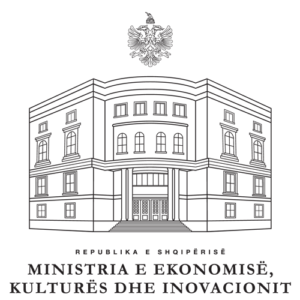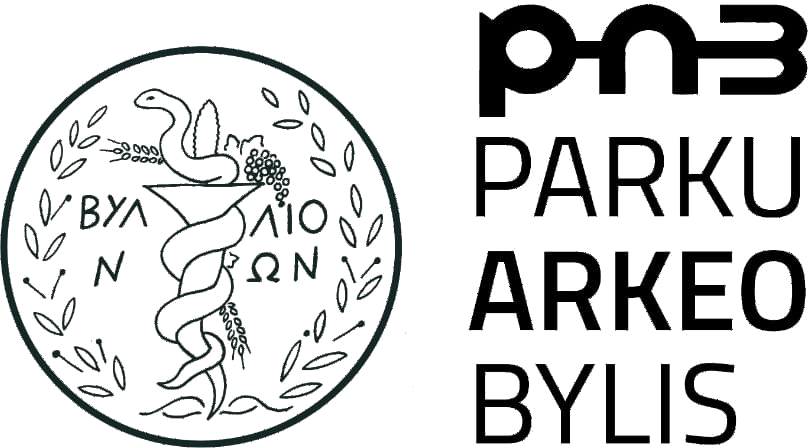Byllis History
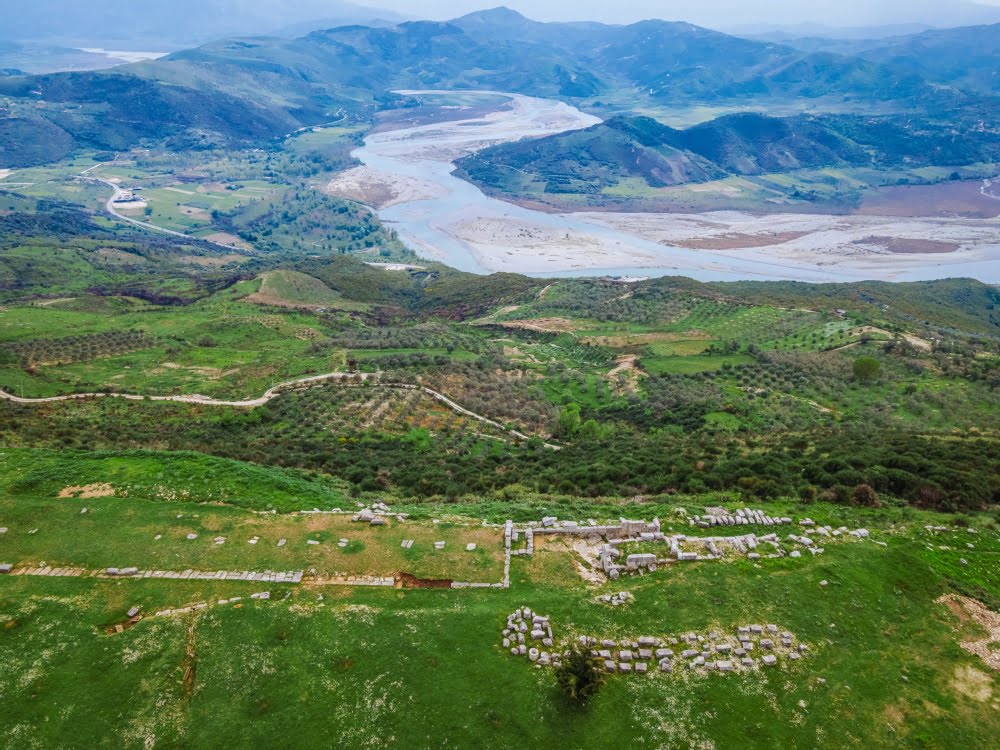
The archaeological park Byllis is located in the province of Mallakastra, on the left side of the national road Fier – Tepelenë, 1.5 km from the village of Hekal. The ancient city of Byllis lies on the plateau of a hill 547 m above sea level, with a dominant and stunning geographical position over the Vjosa river valley.
“Byllis was the largest Illyrian city in South Illyria, with an area of 30 ha, within which there are monuments from different periods.
Byllis was founded in the years 370 – 350 BC and was the capital of the Bylline community, part of the large Illyrian province of Atintania, which included several cities of the lower and middle valley of Aoos (Vjosa). To the south of Byllis are the ruins of the city of Nikaia (today’s Klos village), founded in the second half of the century. V p. B.C., while to its west two other centers are Gurëzeza in Cakran and Margëlliçi in Patos. To the east are the ruins of two castles, that of Rabija and Kalivaci of Tepelena, which mark the eastern borders of this community.”
“According to the ancient author Stefan Byzantini, Byllis has the legendary origin of its foundation by Neoptolemus, the son of Achilles.
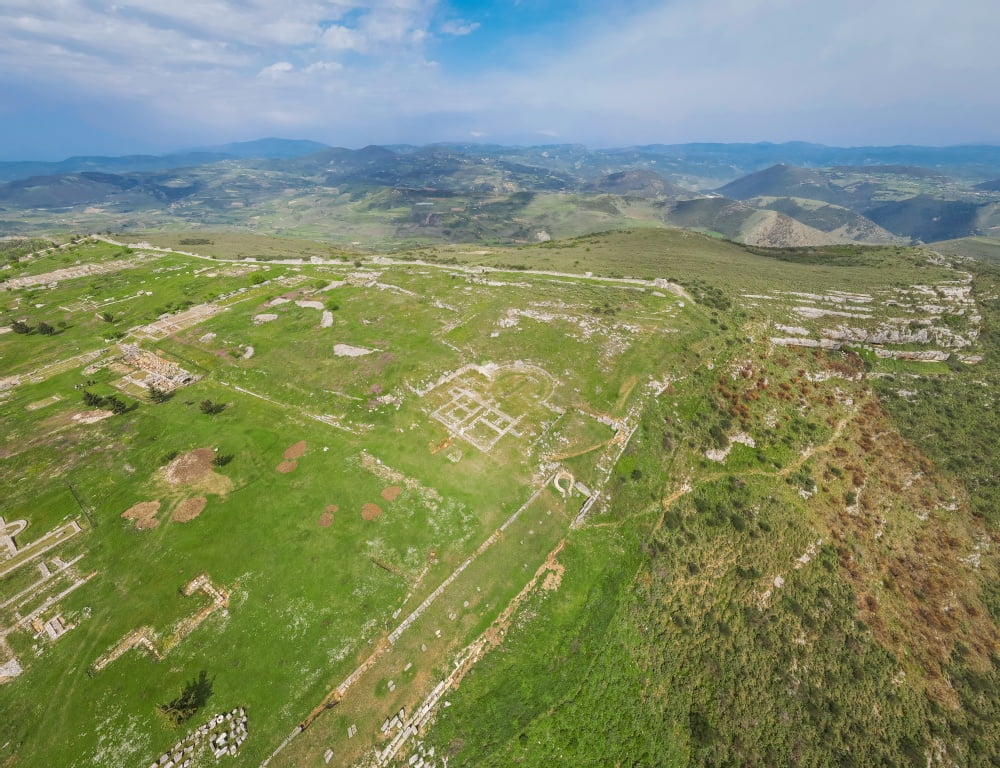

This Homeric origin of the cities has been a trend for the time, this is also evidenced for the neighboring Amants of the Byllini, who linked their descent from the Euboean Abants who settled there after the Trojan War.
The construction of Byllis came as a result of the high economic development of Koinoni Byllina and around the middle of the III century BC. Kr. Byllis took the full view of a city with an Orthogonal urbanistic system where his Agora was completed with public buildings such as the theater, stoa, stadium, gymnasium, temples and other buildings around them.”
Koinon of Byllini also struck his own bronze coins, the symbols of which were different from those of Apollonia.
Bylline coins had several symbols such as the figure of Zeus on one side of the coin and on the other side a horn filled with fruit around which a serpent coiled, which symbolized the cornucopia. Another coin has on one side the head of Neptolemus, the legendary founder of Byllis.
“In 314 BC, Byllis was conquered by the Macedonian king Kassander, who, after defeating the army of the Illyrian king Glaukia, conquered the entire coastal region from Apollonia to Dyrrah.
Two years later, Glaucia took back the territories from the Macedonians and his successor, King Monun, established his residence in Byllin territory, in Gurëzeze.
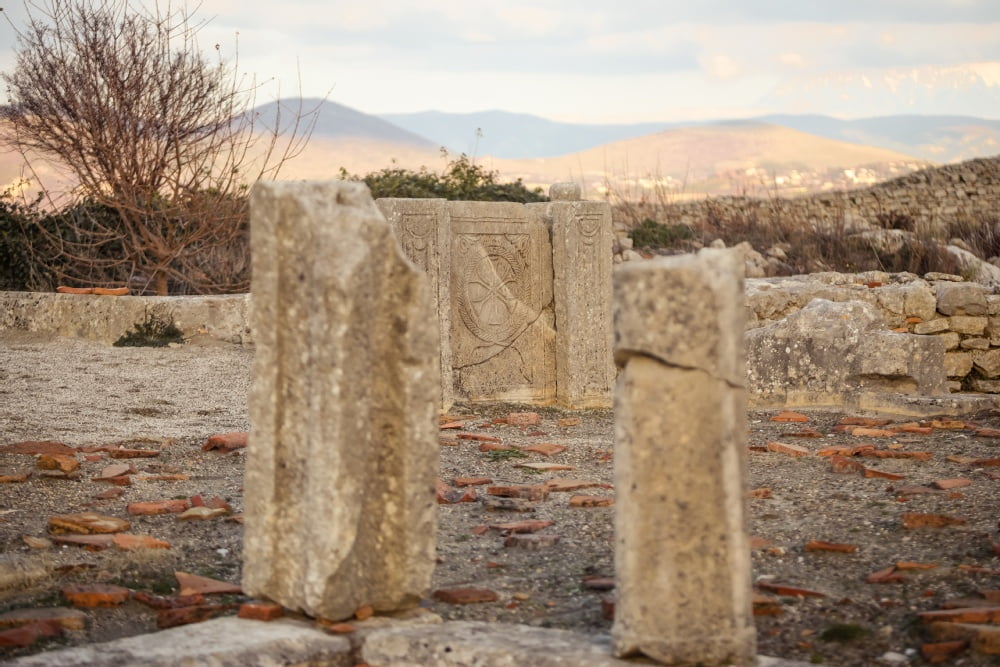

The Roman-Macedonian wars began in 229 BC. Kr. and continued for 90 years where the Byllini territory became a battlefield between the Roman and Macedonian armies, which valued the strategic importance of this territory for the possession of Apollonia.”
“In 213 BC, Byllis was conquered by Philip V of Macedonia, who kept it under his rule until 198 BC, from this year the Byllins gained autonomy which lasted until 167 when all of Illyria fell under the Roman occupation and the emperor August, settled in Byllis a colony of Roman veterans.
During the period of Roman colonization, the surrounding walls were repaired and reinforced, the theater, the stoa were rebuilt and other monuments, mosaic dwellings, shrines, etc. were erected.”
“The role played by Byllis, as an important economic and military center, caused it to occupy a place on the map of the Alexander geographer of the 2nd century BC Ptolemy, who marks it, along with other important cities such as: Dyrrah , Apollonia, Amatia, etc.
In the ancient writings he is mentioned again in the year 54 BC. Kr. in a letter of Cicero, and in 44 BC in a speech delivered by him to the Roman Senate, which accuses Brutus of having conquered Apollonia, Byllis, and Amantia.
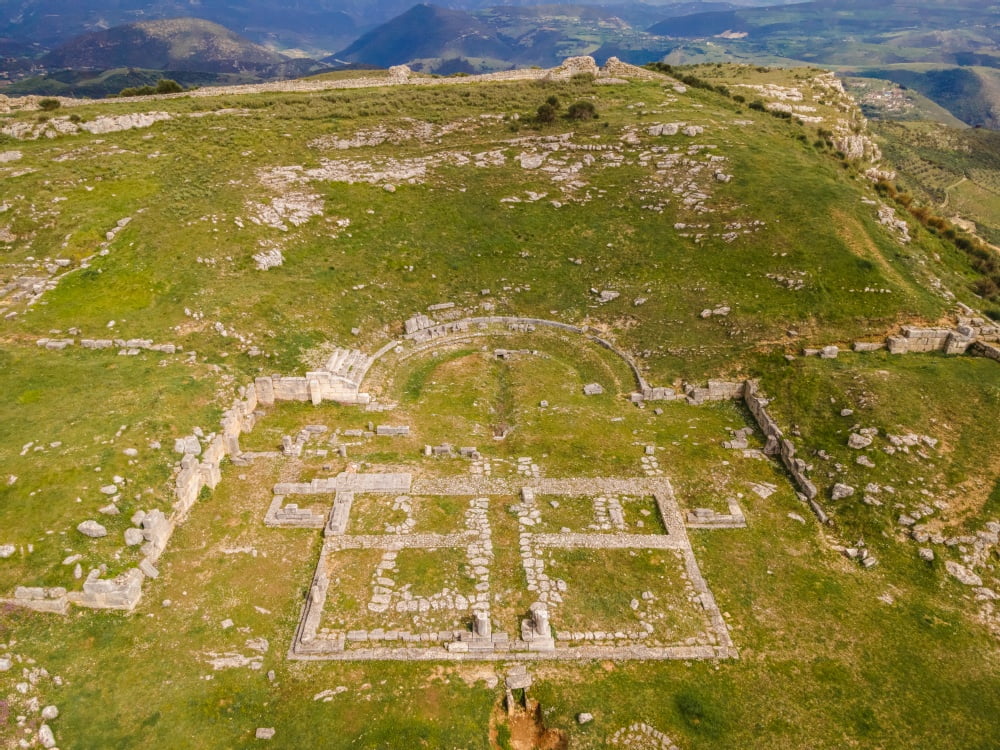
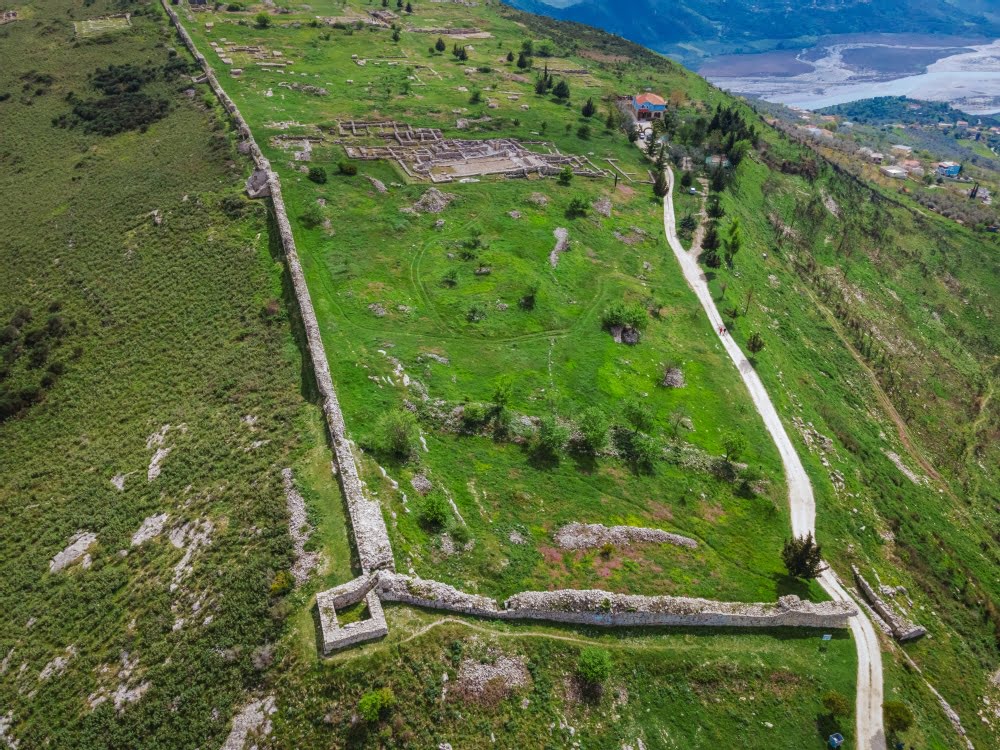
Then, the name of the city appears again in ancient sources in the c. V m. Kr., according to which, in the year 431 m. Kr. Bishop Felix of Apollonia and Byllis participated in the Council of Ephesus alongside the bishops of Dyrrah and Shkodra, as representatives of the province of New Epirus. “
“While in 458 Byllis had its own bishop, which proves that the city had become one of the episcopal centers of New Epirus, alongside Dyrrah, Apollonia, Aulona, Skampini and Lyhnides.
During the barbaric invasions of the Visigoths at the time of Teodos II (408 – 450 BC) the city was destroyed and during the first half of the century. V, was rebuilt and fortified again by Justinian’s general Victorinus.
In this period, a large number of churches were built, inside and outside the surrounding wall, including the episcopal complex.
In the reign of Emperor Justinian 527 – 565, Byllis is mentioned as one of the main cities of New Epirus.
In 586, as a result of the Slavic invasions, the city was finally destroyed.
After this destruction, the episcopal center was transferred to Ballsh, where a Christian basilica was built in the middle of the 6th century. The new center inherited the name of the old town, which over the centuries was transformed from Byllis to Ballis and finally to Ballsh. This name is explained by the Albanian word ball, i.e. headland.”


The archaeological park Byllis is located in the province of Mallakastra, on the left side of the national road Fier – Tepelenë, 1.5 km from the village of Hekal. The ancient city of Byllis lies on the plateau of a hill 547 m above sea level, with a dominant and stunning geographical position over the Vjosa river valley.
“Byllis was the largest Illyrian city in South Illyria, with an area of 30 ha, within which there are monuments from different periods.

Byllis was founded in the years 370 – 350 BC and was the capital of the Bylline community, part of the large Illyrian province of Atintania, which included several cities of the lower and middle valley of Aoos (Vjosa). To the south of Byllis are the ruins of the city of Nikaia (today’s Klos village), founded in the second half of the century. V p. B.C., while to its west two other centers are Gurëzeza in Cakran and Margëlliçi in Patos. To the east are the ruins of two castles, that of Rabija and Kalivaci of Tepelena, which mark the eastern borders of this community.”
“According to the ancient author Stefan Byzantini, Byllis has the legendary origin of its foundation by Neoptolemus, the son of Achilles.

This Homeric origin of the cities has been a trend for the time, this is also evidenced for the neighboring Amants of the Byllini, who linked their descent from the Euboean Abants who settled there after the Trojan War.
The construction of Byllis came as a result of the high economic development of Koinoni Byllina and around the middle of the III century BC. Kr. Byllis took the full view of a city with an Orthogonal urbanistic system where his Agora was completed with public buildings such as the theater, stoa, stadium, gymnasium, temples and other buildings around them.”
Koinon of Byllini also struck his own bronze coins, the symbols of which were different from those of Apollonia.

Bylline coins had several symbols such as the figure of Zeus on one side of the coin and on the other side a horn filled with fruit around which a serpent coiled, which symbolized the cornucopia. Another coin has on one side the head of Neptolemus, the legendary founder of Byllis.
“In 314 BC, Byllis was conquered by the Macedonian king Kassander, who, after defeating the army of the Illyrian king Glaukia, conquered the entire coastal region from Apollonia to Dyrrah.
Two years later, Glaucia took back the territories from the Macedonians and his successor, King Monun, established his residence in Byllin territory, in Gurëzeze.

The Roman-Macedonian wars began in 229 BC. Kr. and continued for 90 years where the Byllini territory became a battlefield between the Roman and Macedonian armies, which valued the strategic importance of this territory for the possession of Apollonia.”
“In 213 BC, Byllis was conquered by Philip V of Macedonia, who kept it under his rule until 198 BC, from this year the Byllins gained autonomy which lasted until 167 when all of Illyria fell under the Roman occupation and the emperor August, settled in Byllis a colony of Roman veterans.

During the period of Roman colonization, the surrounding walls were repaired and reinforced, the theater, the stoa were rebuilt and other monuments, mosaic dwellings, shrines, etc. were erected.”
“The role played by Byllis, as an important economic and military center, caused it to occupy a place on the map of the Alexander geographer of the 2nd century BC Ptolemy, who marks it, along with other important cities such as: Dyrrah , Apollonia, Amatia, etc.
In the ancient writings he is mentioned again in the year 54 BC. Kr. in a letter of Cicero, and in 44 BC in a speech delivered by him to the Roman Senate, which accuses Brutus of having conquered Apollonia, Byllis, and Amantia.

Then, the name of the city appears again in ancient sources in the c. V m. Kr., according to which, in the year 431 m. Kr. Bishop Felix of Apollonia and Byllis participated in the Council of Ephesus alongside the bishops of Dyrrah and Shkodra, as representatives of the province of New Epirus. “
“While in 458 Byllis had its own bishop, which proves that the city had become one of the episcopal centers of New Epirus, alongside Dyrrah, Apollonia, Aulona, Skampini and Lyhnides.
During the barbaric invasions of the Visigoths at the time of Teodos II (408 – 450 BC) the city was destroyed and during the first half of the century. V, was rebuilt and fortified again by Justinian’s general Victorinus.

In this period, a large number of churches were built, inside and outside the surrounding wall, including the episcopal complex.
In the reign of Emperor Justinian 527 – 565, Byllis is mentioned as one of the main cities of New Epirus.
In 586, as a result of the Slavic invasions, the city was finally destroyed.
After this destruction, the episcopal center was transferred to Ballsh, where a Christian basilica was built in the middle of the 6th century. The new center inherited the name of the old town, which over the centuries was transformed from Byllis to Ballis and finally to Ballsh. This name is explained by the Albanian word ball, i.e. headland.”
